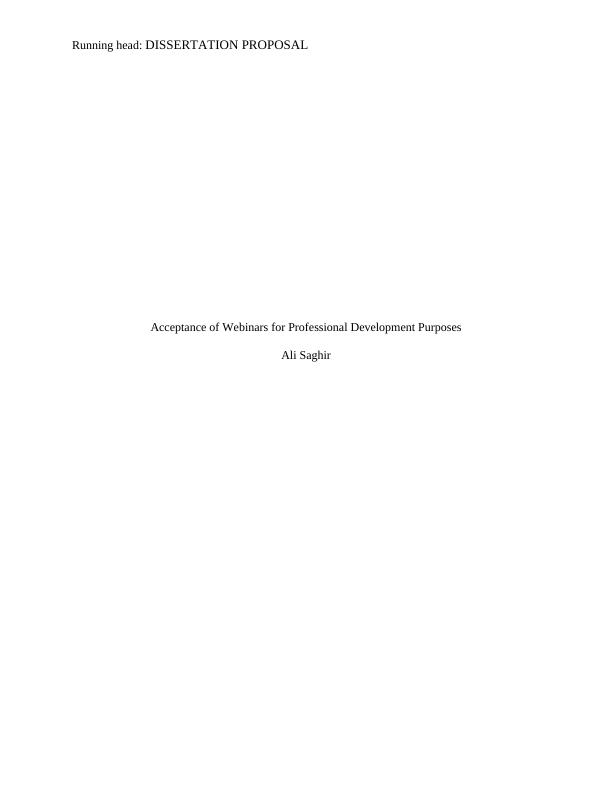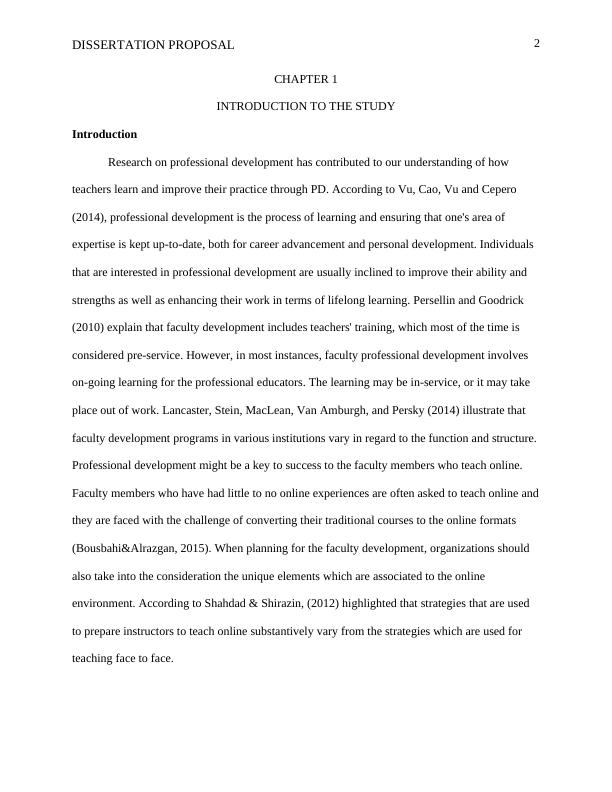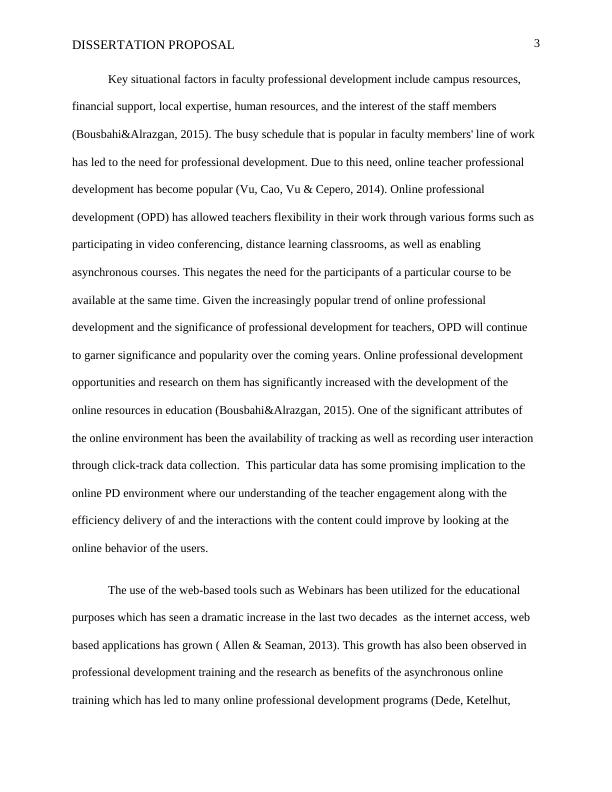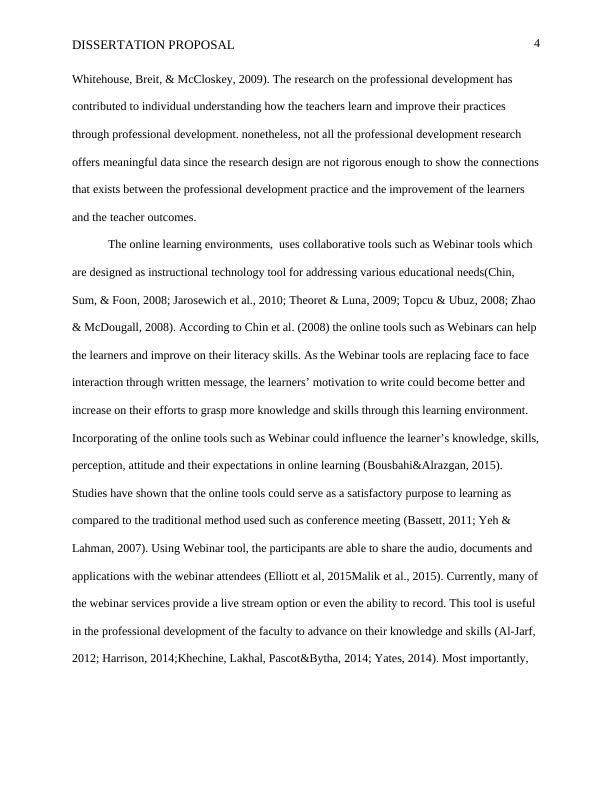Acceptance of Webinars for Professional Development Purposes
Webinars Acceptance among Faculty for Professional Development Purposes
13 Pages3689 Words265 Views
Added on 2023-06-15
About This Document
This proposed quantitative study investigates faculty members’ behavioral intention towards the use of webinars for professional development purposes in the Institute of Public Administration (IPA) in Saudi Arabia based on the Technology Acceptance Model (TAM). The study aims to address the challenges of using webinars as a professional development tool and to determine the level of acceptance of webinars among faculty members. The theoretical framework that guides the proposed study is the Technology Acceptance Model (TAM).
Acceptance of Webinars for Professional Development Purposes
Webinars Acceptance among Faculty for Professional Development Purposes
Added on 2023-06-15
ShareRelated Documents
End of preview
Want to access all the pages? Upload your documents or become a member.
Developing a Culturally Responsive Learning Community
|19
|5110
|314
Workshop on Team Dynamics and Team Building Tasks
|11
|770
|57
Professional Practices and Development in Education and Training
|10
|575
|414
Grant Proposal for Implementing Smart Learning Technology in an Elementary School
|6
|1283
|162
Infusing Technology into Learning: E-Learning Platform Creation
|14
|3375
|169
Developing Academic And Professional Skills
|13
|1028
|491




